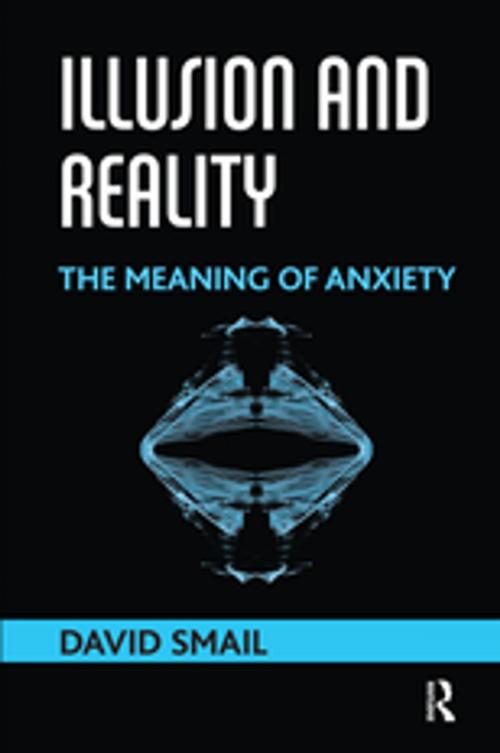Illusion and Reality
The Meaning of Anxiety
Nonfiction, Health & Well Being, Psychology, Mental Health| Author: | David Smail | ISBN: | 9780429914737 |
| Publisher: | Taylor and Francis | Publication: | May 8, 2018 |
| Imprint: | Routledge | Language: | English |
| Author: | David Smail |
| ISBN: | 9780429914737 |
| Publisher: | Taylor and Francis |
| Publication: | May 8, 2018 |
| Imprint: | Routledge |
| Language: | English |
This work challenges the notion that anxiety and depression amount to a mental illness denoting that something is wrong with the individual sufferer. Instead, anxiety and depression are described as perfectly rational responses to difficulties in the sufferer's world, experienced subjectively by that person. An essential contrast is drawn between objective conceptions of normality (what reality ought to be as per commercial and other objectifying sources) and the reality of the individual's subjective experience of the world (abuse, unemployment, and so on). Chapters include tackling the myth of normality; examining shyness; and analysing the way in which assumptions behind the use of language can foster anxiety and depression. The book's primary purpose is to explain the meaning of anxiety as experienced by the sufferer. These insights also lead to a view, by way of secondary purpose, that the role of the therapist is not in 'curing' the individual, but rather to negotiate demystification and to provide insight into the effects of the problems in the sufferer's world, based on the sufferer and the therapist's shared subjective understanding.
This work challenges the notion that anxiety and depression amount to a mental illness denoting that something is wrong with the individual sufferer. Instead, anxiety and depression are described as perfectly rational responses to difficulties in the sufferer's world, experienced subjectively by that person. An essential contrast is drawn between objective conceptions of normality (what reality ought to be as per commercial and other objectifying sources) and the reality of the individual's subjective experience of the world (abuse, unemployment, and so on). Chapters include tackling the myth of normality; examining shyness; and analysing the way in which assumptions behind the use of language can foster anxiety and depression. The book's primary purpose is to explain the meaning of anxiety as experienced by the sufferer. These insights also lead to a view, by way of secondary purpose, that the role of the therapist is not in 'curing' the individual, but rather to negotiate demystification and to provide insight into the effects of the problems in the sufferer's world, based on the sufferer and the therapist's shared subjective understanding.















